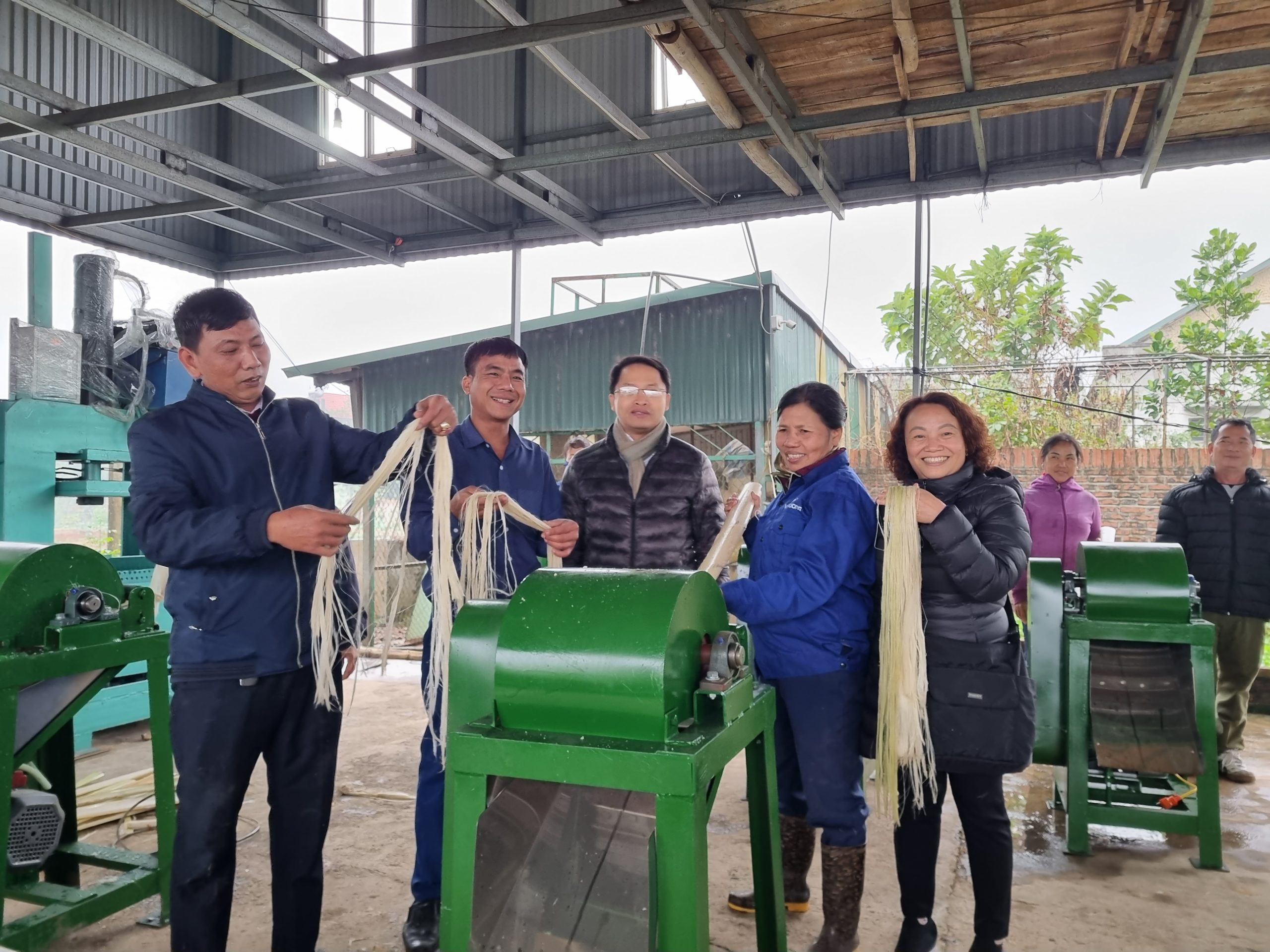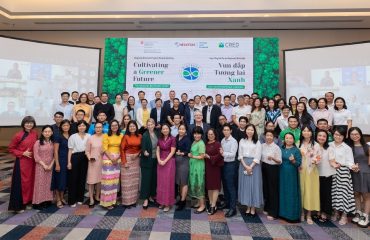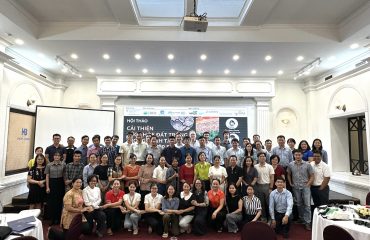Banana is a popular and widely grown tree in the northern midland and mountainous provinces of Vietnam due to its easy-to-grow nature, soil and climate compatibility. Banana trunks, after being harvested, are used as animal feed and/or discarded as agricultural waste.
The Project “Banana fibers – Economic opportunities – Solutions for the environment” is funded by the German Ministry of Economic Cooperation and Development (BMZ) through the German Helvetas Organization and immplemented by the Center for Rural Economy Development – CRED as pilot models in 3 cooperatives in 3 provinces where has banana growing areas: Manh Khoi Muong La Cooperative, Muong Bu commune, Muong La district, Son La province, Bao Thang Cooperative for banana fiber and agricultural service, Ban Cam commune, Bao Thang district, Lao Cai province and Thuong Nong Agricultural Cooperative, Dan Quyen Commune, Tam Nong District, Phu Tho Province.
Musa Pacta is a company specializing in manufacturing and trading in banana fibers and products made from natural fibers and banana trunks for export and handicraft purposes. Through the connection and financial support from the Project, Musa Pacta company transferred machineries and equipments, technology and vocational training to project’s cooperatives. Not only transferring technology and training, Musa Pacta and 03 cooperatives signed a contract to consume products (raw banana fiber and handicraft knitting items).

Handicraft products from banana fiber
Each cooperative’s workshop is supported by the project with 7 banana fiber stripping machines, 1 banana peeling machine and 01 banana press machine with a capacity of 7-10 tons of banana trunks per day, creating 450 permanent jobs for local people, both full-time and part-time (mainly for women over 50 years old have run out of opportunities to find work) from braiding yarn and knitting handicrafts from banana fiber. Residue and juice of banana’s stalks through fermentation technology turns into microbial fertilizer for organic agriculture.
At current prices, in addition to income from selling bananas, the efficiency from production of banana fiber is 3 million VND/1 ton of banana trunks (10-12 kg of fibers and 500 kg microbiological organic division), not including income from handicraft products.
This circular economy model in banana production is receiving the attention of other growing regions in the Northern Midlands and Mountains. It is hoping that these pilot model will be replicated with sustainability in many other growing areas from the success of above mentioned cooperatives.


















